
The nurse pushed open the door and stepped into the patient’s room, waiting for me to follow. Beyond her lay an unconscious man, sedated, tied down, and fighting for his life.
When a COVID victim’s oxygen levels are falling, and nothing else works, their blood can be pumped out, oxygenated, and returned to their body in a medical procedure called ECMO. It is a complicated ballet involving specialists, doctors, and most of all, nurses.
I hit the record button on my camera, took a breath of hood-filtered air, and stepped into the room. This is what I saw (see video below).
Backstory
Since COVID-19 arrived in the US, I’ve been mostly idle, doing my part to flatten the curve by staying home. But as a documentary filmmaker, I’ve been profoundly curious about what’s happening on the front lines. Would anyone get a chance to record it up close?
I’ve been making films for UW Medicine for 5 years. So I figured if anyone could get a chance, it might be me. When the COVID wave hit Seattle in early March, I sent an email to everyone inside the organization I could think of, begging them to help me get in.
The result: crickets. No one replied. They were, without a doubt, beyond busy.
Then on April 8, it happened. I got an email from the chief nursing officer at Harborview Medical Center. I’d never met him before, and he wasn’t one of the people I’d contacted. Turns out he’d seen a Harborview montage video I made for a fundraising event last fall, and…
“I am reaching out to you to see and possibly get a quote for a project I have in mind for nurses week. I’d like to work on a video that we can highlight the Harborview nurse, especially in this COVID-19 situation, and what it means to be a nurse an HMC.”
The initial ask
After speaking with him, it became clear he was asking for another montage video featuring nurses at work, which would be b-roll for a thank-you message he planned to deliver for Nurse’s Week.
I’ve observed that sometimes, what clients ask for, and what they actually want, can be different. And you have to step carefully to lead them from their initial idea to something bigger. I felt very strongly that the opportunity to film in the Covid ICU could lead to a powerful story, one that would resonate with a general audience.
The initial idea was to focus on three nurses. The client wanted all of them in the video. I find stories are typically strongest when they are told from a singular perspective. So how to find the best story? And how best to tell it?
Light and shadow are among the most powerful tools we filmmakers have to evoke drama. And when I think of COVID 19, I think shadows. So I just knew we had to shoot this at night. I put together a quick mood board based on images I pulled from Google searches. The client took a look and agreed.
Audio-only interview as casting
A few days later I sat down with each of the three nurses for a one-hour audio-only recorded conversation. I intentionally skipped filming these interviews, and I’ll explain why shortly. All were interesting in different ways. One of them worked in the emergency department. Another had actually contracted COVID-19 herself, and brought it home to her son and parents. Luckily for them, they all had mild cases, and she was back to work three weeks later.
But the nurse who really caught my attention was named Breazy. She is a Covid ICU nurse, and a natural storyteller. When this all began, she had to send her son away to keep him safe, so she could emotionally focus on her job. She explained that family members sometimes have to say good-bye to their loved ones via iPad, because they can no longer visit them in the hospital. And how when she loses a patient, she takes a bunch of flowers to a beach near her home and floats it into the sea, to say good-bye. When I heard that, I knew exactly how the film was going to end.
But to get to the beginning and middle parts, I had to sell my client on this story idea.
Selling the story with a radio edit
To do that, I created a “radio edit.” Without having shot a frame of video, I brought Breazy’s interview audio into Final Cut Pro X, after cleaning it up in Adobe Audition and iZotope RX. My first stringout was 17 minutes long. I kept cutting until it felt right, adding breathing room for pacing, and finally, music sourced from MusicBed. My goal was to make something that would be right at home on This American Life.
Here’s what that sounded like:
The client replied: “I like it.” But, what about that thank-you message, he asked. Could we fit that in somewhere? Definitely, I replied. And… maybe the perfect place for it would be in a separate video? One that I’d be willing to do for no extra charge if we could capture his message in a single take? Sold.
I’ve developed this no-camera approach to interviews over the last 5 years of working with large medical clients. A litany of good things happens when your first deliverable to a client makes them close their eyes and IMAGINE what they are going to be seeing, rather than what they ARE seeing. It invites them into the story creation process. It’s like dating before getting married. And the result is almost always the same: they like it, and they can’t wait to see what it looks like with video. Usually there are few changes. And the changes are very simple to make – the only thing that requires retiming is the music.
Planning the shoot
A night shift for nurses begins at 7pm and ends at 7:30am. Not only did I want to shoot the entire shift, but because I wanted to shoot Breazy on the beach afterward, it would mean a 14-hour day.
What is the right filmmaking equipment to take into a Covid ICU? I learned that going in and out of the negative-pressure rooms was a time-consuming process. A person called a “dofficer” observes and assists you donning and doffing the personal protective equipment required. Every item has to be wiped down with a cloth dripping with alcohol when it exits the room. So I would definitely need a weather sealed camera.
What’s more, I would be shooting while wearing a papr hood, double layers of latex gloves, and a plastic pancho that doesn’t breathe. That made me nervous about focus. I like to think my 54-year-old photojournalist’s eye is pretty good. But I’d never had to nail focus in conditions quite like that before.
I realized that I was going to have whatever I could carry in one hand, and that’s it. No tripod, no extra lenses, just commit to handheld and go for it.
Choosing the Canon C500mkii
Back in January, after a lot of research, I’d purchased a Canon C500mkii. My previous camera, a Sony FS5, was a real workhorse. But when the new crop of full frame cameras came out, I knew it was time to go back to the big-sensor look that was my first love. The 5dmkii is what lured me into video from still photography in the first place. For years I wondered if Canon would ever make a camera that gave us everything the 5dmkii had, in a body designed for video. This felt like that camera to me.
Apart from it’s full frame sensor and monster 5.9k raw recording capabilities, I chose this camera over the Sony FX9 because it does something very special with autofocus. First of all, it works with a lot of lenses that I already own. Secondly, instead of snapping into focus, it can be configured, with the right EF lenses, to gently arrive in focus, to breathe into focus.
Configuring autofocus
This organic focusing is controlled via a menu that gives you control over the speed from +2 to -7. It works great with the newer Mkii lenses, but does not work with older EF glass such as the original EF 35mm f/1.4. I set the autofocus speed to -1 and sometimes to -2, for this film.
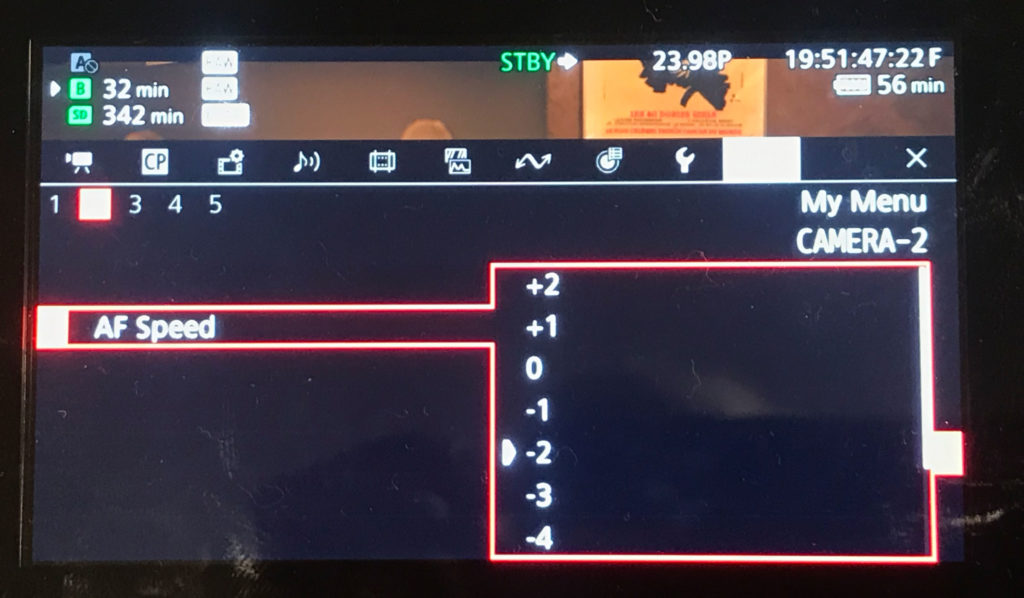
For this project, because I would have just one lens, I chose the Canon EF 24-70 f/2.8 mkii. This lens is great optically, and pretty fast for a zoom. But one thing has kept me from using it much for handheld in the past: it lacks image stabilization. And the fact is, when I’m handheld, I need IS.
C500mkii image stabilization: on
The C500mkii is the first professional digital cinema camera that Canon has made that features IS built right into the camera body. In testing, I found it works very well when you are trying to keep the camera still, but it’s less effective when you’re intentionally moving the camera. It does a great job smoothing out footage you want to keep steady, but a poor job of smoothing out footage you want to keep in motion.
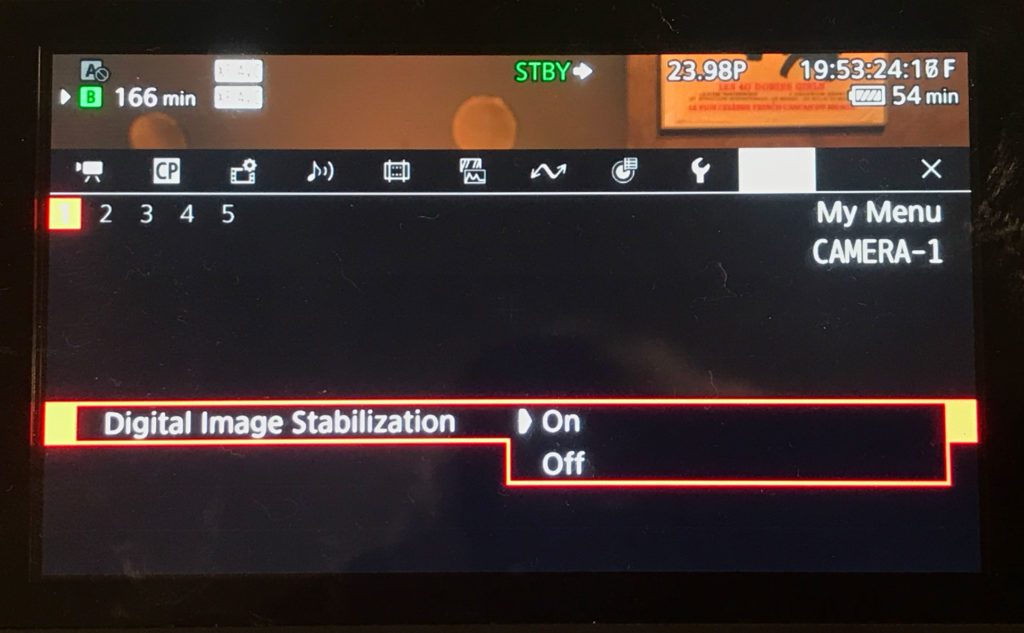
For the Covid story, I chose XF-AVC DCI 4k. Shooting raw would have been nice, but I’d fill a half-terrabyte cf express card in 30 minutes of shooting. Additionally, the built-in image stabilization is disabled in RAW.

I enabled the pre-roll feature on the camera, and boy, I am glad I did! There are at least half a dozen shots in the final film that I would have missed without it.
Custom menu settings
A killer feature on the C500mkii is the option to make a custom menu, which you can load with your frequently accessed settings. I mapped mine to button 12. Pressing that lets me access all the menus I need to without digging.
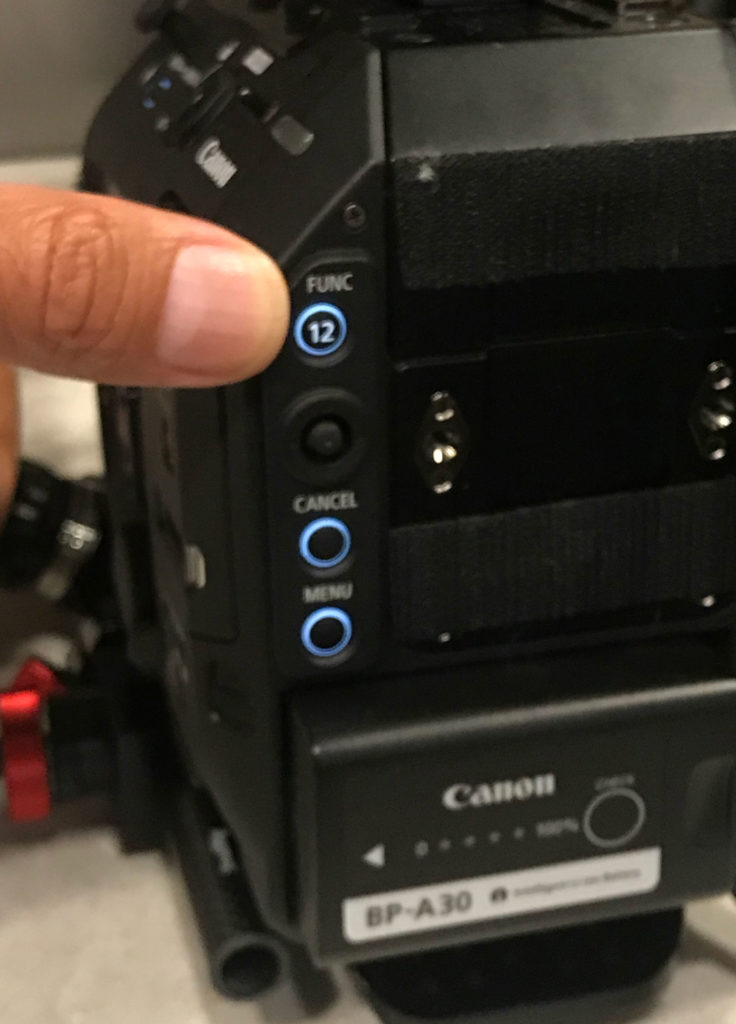
I also remapped several of the buttons for more ergonomic response. For example, the one-shot autofocus button is located on the front of the camera in a place that difficult to reach. I like to keep three points of contact while I’m shooting and focusing, so I mapped it to the #1 button under my thumb on the right handgrip. Squeeze and shoot.
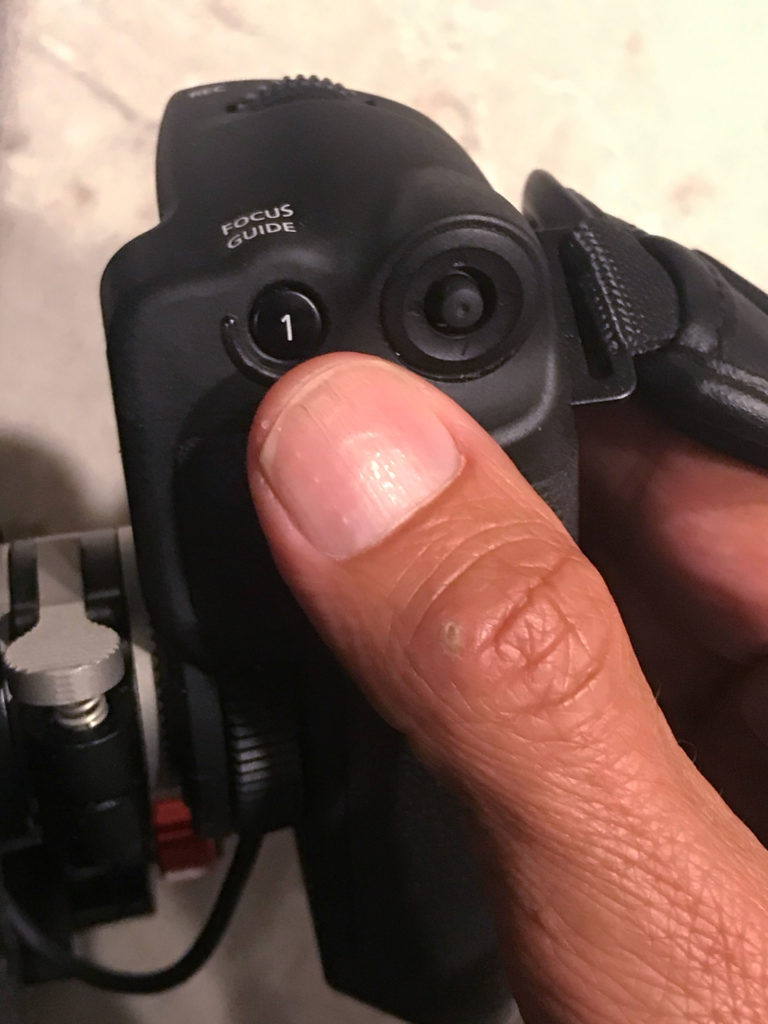
I also remapped the iris wheel to go in the opposite direction from default. I like to roll it DOWN to darken the image (stop down), and UP to lighten it (open up).
The sensor size is something I also like to change on the fly, switching between full frame and super35 to turn the 24-70 into an effective 36-105mm field of view. It is very handy for a little extra reach, and switching the sensor while in XF-AVC 4k leaves your format settings untouched. You get beautiful 4K both ways.
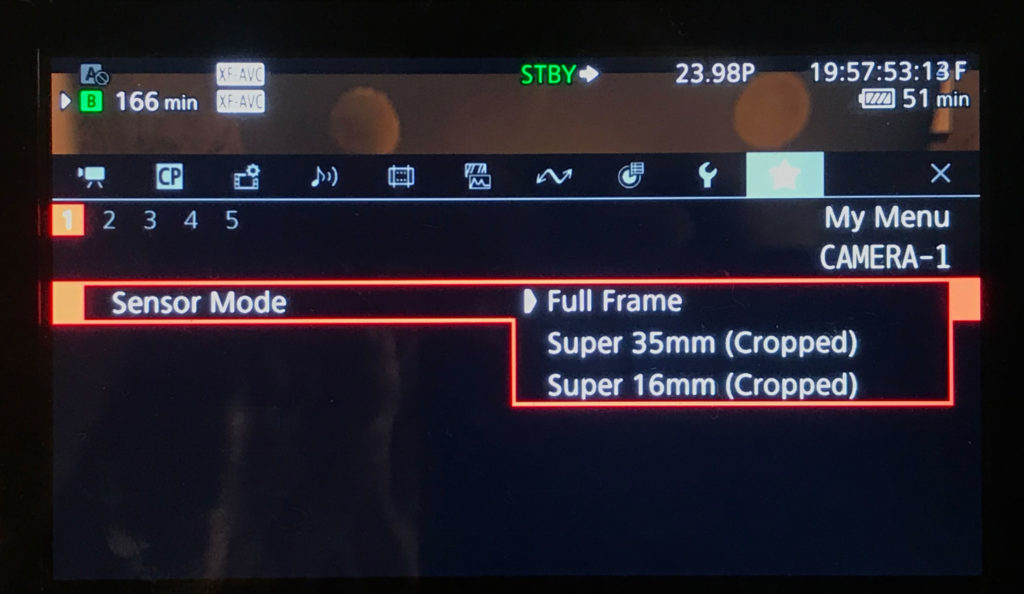
Two person crew
I never work a paid gig without a sound recordist. Sound is way too important to take into my own hands when those hands are holding a camera. Phil Gorman, whom I’ve been training for the past several years, is one of those rare sound recordists who has no problem wearing more than one hat during a shoot.
And for this one, I asked him to to use lavs, and put a light on the end of his boom pole, instead of a shotgun mic. So whenever I needed it, he could fly the light in for some fill or a little scratch light. That gave me the ability to pick up shots like this one:
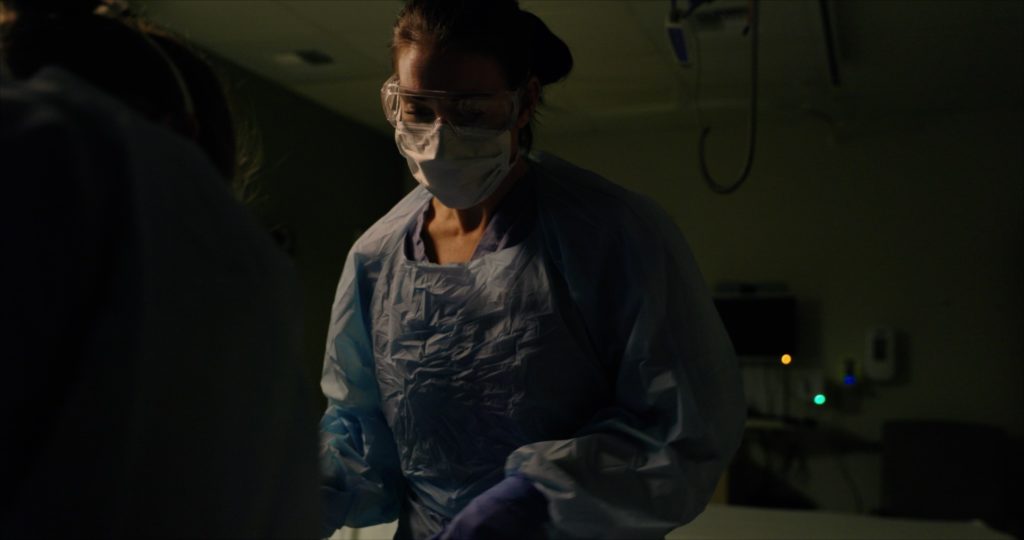
The shoot
The nice thing about doing a shoot after you’ve done a radio edit is that you know exactly what you need to shoot. It’s almost like having a script.
I had imagined opening this film with a blue-hour drone shot of Harborview Medical Center. So I planned to return a few days later to pick that up after sunset. So I started this night rolling camera at roll call.
DJI no-fly zones
As an aside, when I returned to the hospital for that drone shot, my rented DJI Phantom 4 v2 would not take off. Even though I had received permissions from 3 different hospital department heads to fly it, because the area contains a helipad and is a designated first-responder area, the DJI geofence see is as a no-fly zone. I tried following their protocol to get an override from DJI, but no one responded to my repeated emails for 24 hours. Grounded, I had to settle for exterior views of the hospital in blue hour. And with the strangely deserted streets due to Coronavirus, it worked out great to open the film. And that sunrise drone shot three-quarters of the way through? I pulled it from another shoot I’d done at the same hospital 6 months previously, before DJI geofenced it.
Virtually the whole night was handheld. I think there was just one shot on sticks inside the hospital that made it into the film. My biceps were burnt by the end of the night, but holding the camera tucked into my waist like a football was a winning strategy. It meant I was able to give the nurses a heroic camera angle, while being immersed in the action.
Autofocus just works
The C500mkii’s AF touch screen works with latex gloves, a big surprise to me. Pulling focus was as simple as supporting the camera on my waist, touching the screen, and punching the focus button under my right thumb.
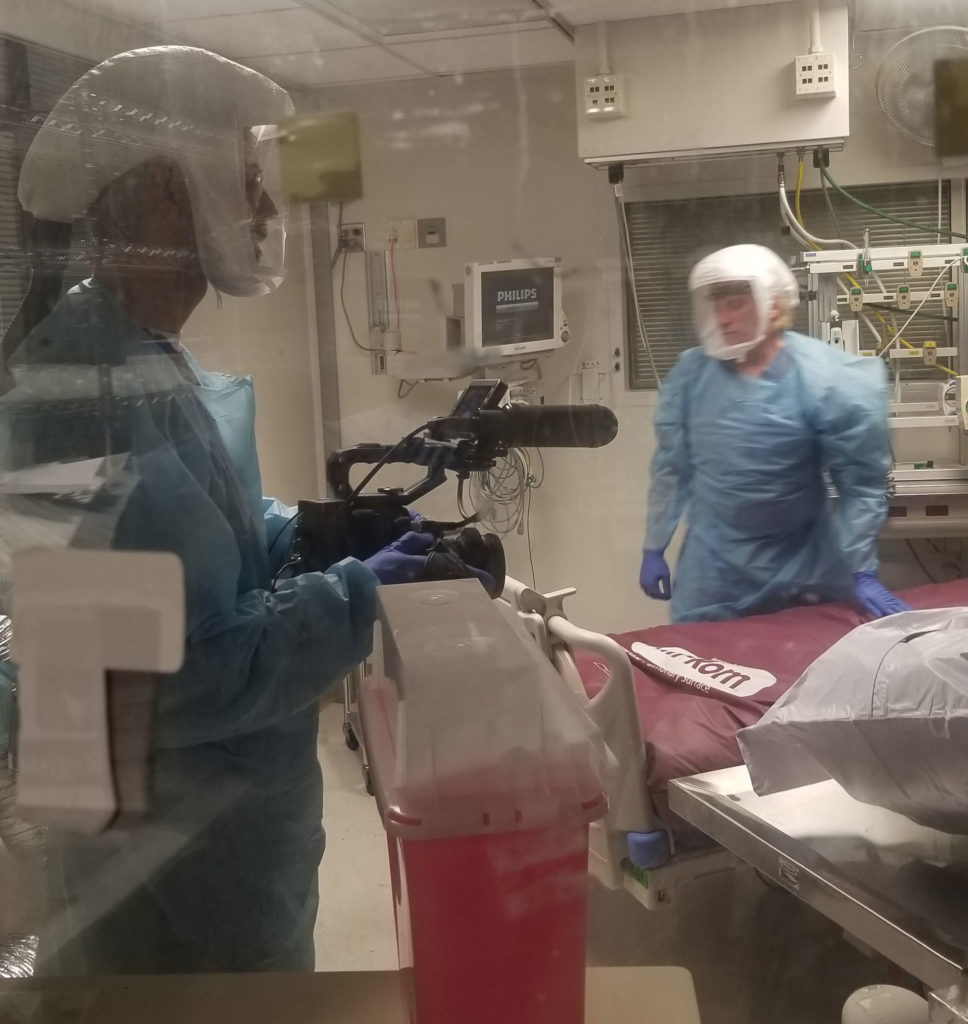
It was a very long night.
The next morning, after her shift ended, Breazy met me in West Seattle with a wreath of red and yellow tulips. Both of us were bone tired. I knew I wasn’t going to get multiple takes of anything. So I again relied on autofocus to track her walking across the beach (this on sticks with a 70-200 zoom). Then back to handheld as she waded into the waves and tossed the flowers, then back onto sticks as she exited camera left. I let the camera roll for a long time to accommodate credits. And I forgot to get the insert shot that I needed of the flowers floating to cover her last lines. I came back to the same beach two days later with my own flowers to pick that up.
The edit
When I sat down with the footage, the question on my mind was, did I get the shot? There’s always some percentage of shots that for one reason or another, are unusable. Usually it’s I because I missed the focus, or because the shot is too shaky. But I had to look very, very deeply into the C500mkii footage to find shots that were unusable. Virtually all of the shots I really wanted to be sharp, were sharp. The ones I needed to be stable, were stable.
Reviewing the footage reminded of my days as a newspaper photojournalist in the mid 90s, when we began making the transition from manual focus cameras. There came a day when it just became clear that AF could do a better job than you could. So we switched, slowly at first, and then all at once.
The edit came together in a couple of days. Having a radio edit to cut to makes it clear what footage you need, and where you need it, in the edit. Getting the rough cut approved by the client was easy. The hard part, it turned out, was getting it past the legal department. That took about two weeks. And by the time we were done, some pivotal audio was removed and every inch of patient skin had to be blurred out. That made me sad. A nurse’s story needs patients as supporting characters, and the film loses some of its humanity without them. But the law is the law. And at the end of the day, it’s still a powerful story. It has received well over 100k views last time I checked, making it the most viewed film I’ve ever made.
Conclusion
The Canon C500mkii is the first digital cinema camera I’ve used that can focus better and faster than I can. It’s like having a super power. This project, and this camera, has changed how I approach documentary cinematography. Instead of fretting about focus, I’m now free to think more about what I’m shooting than how I’m shooting it. Attention moves from the mechanics, to the moment. It’s made me a better storyteller. And that’s all I can ask for from a camera.
Check out a few full resolution 4k frame grabs:
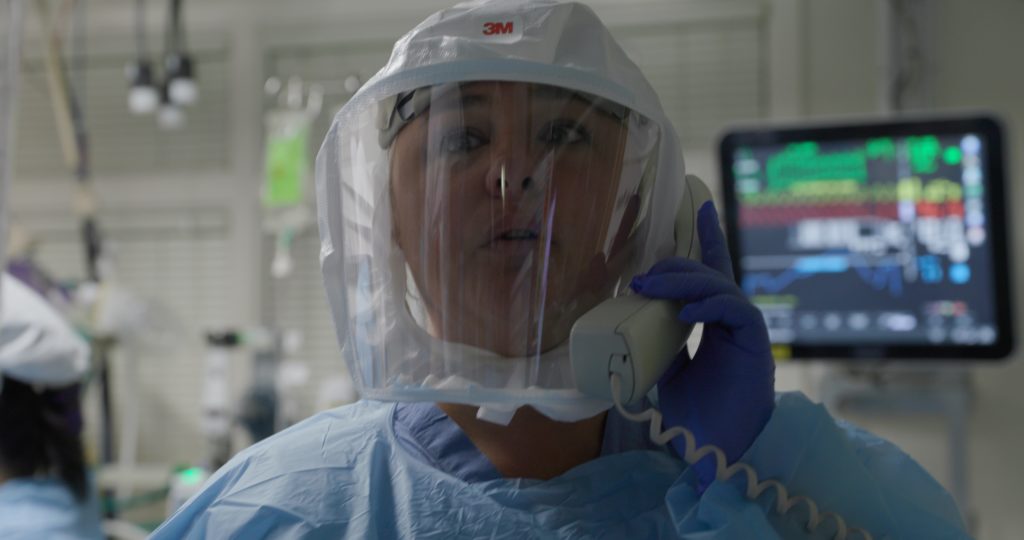
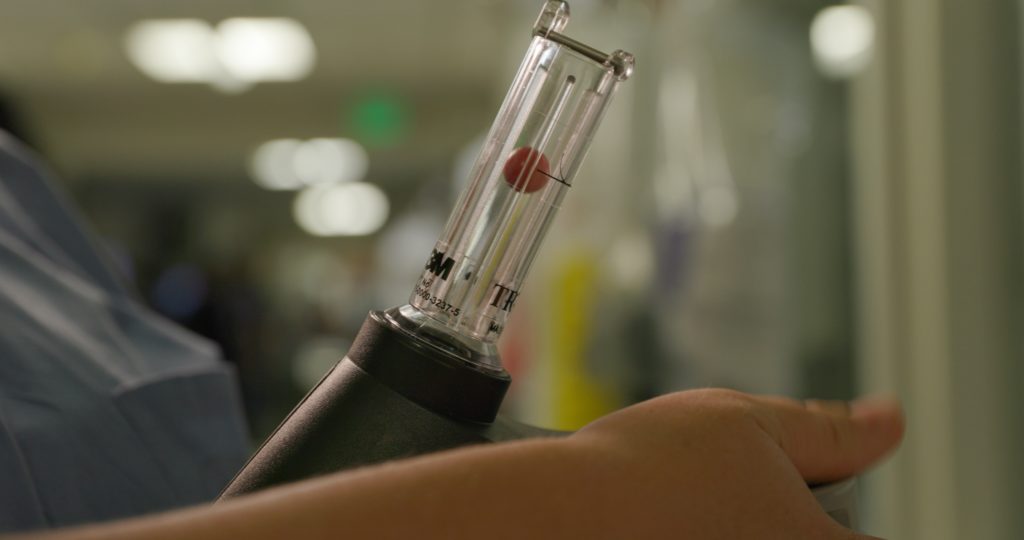
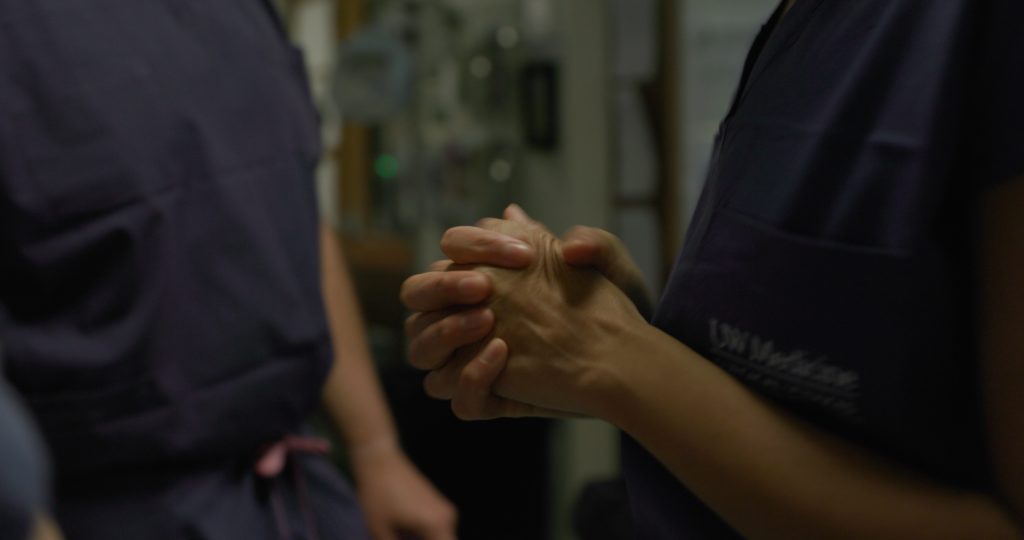
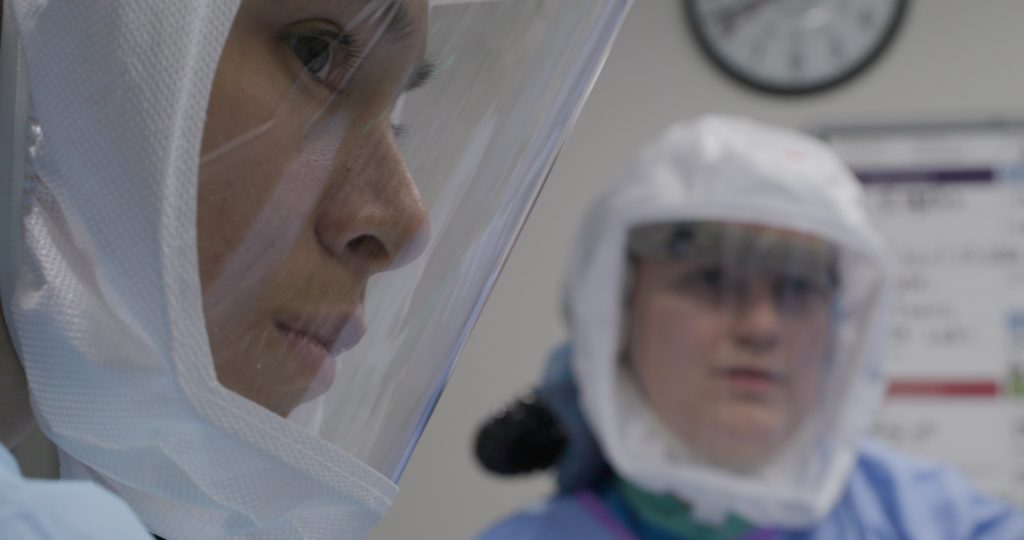
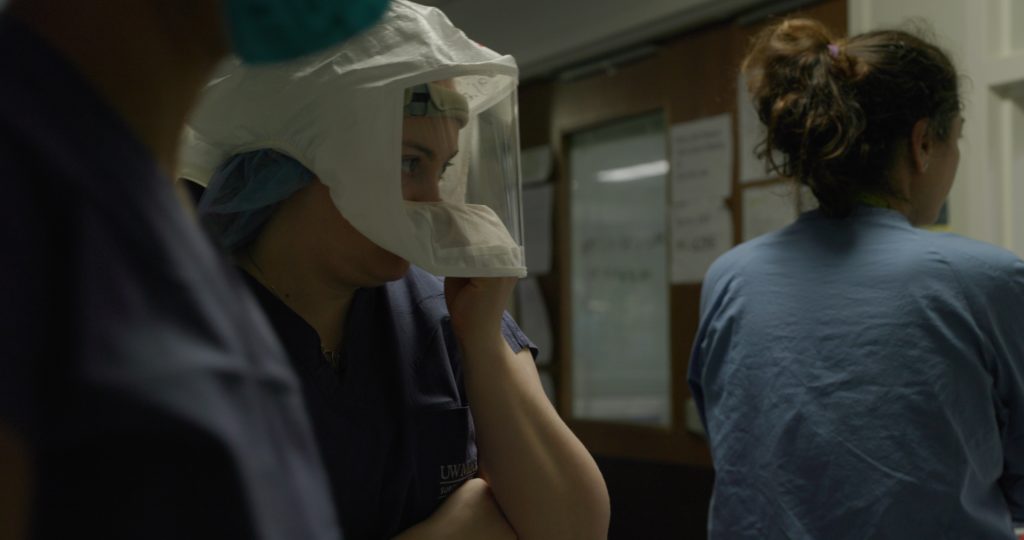
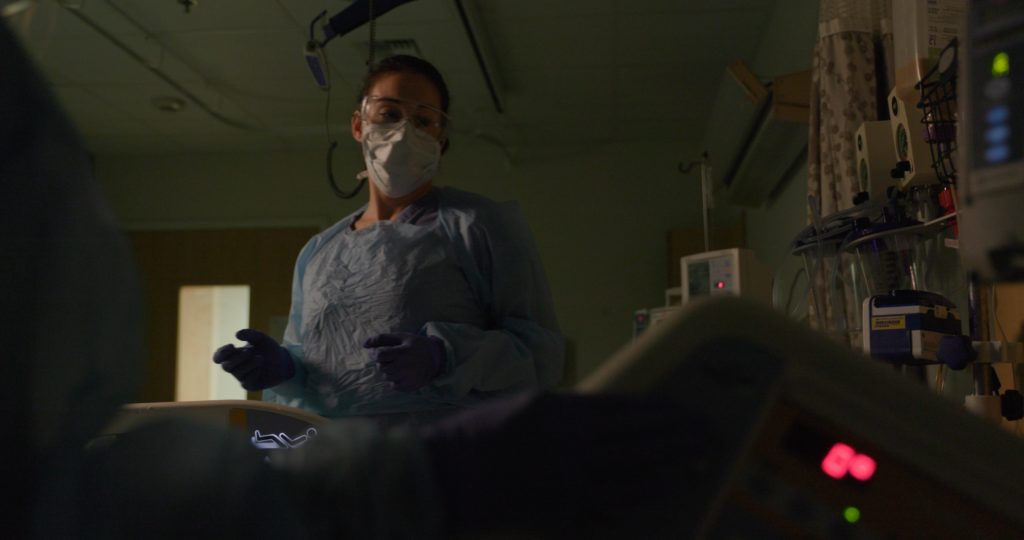
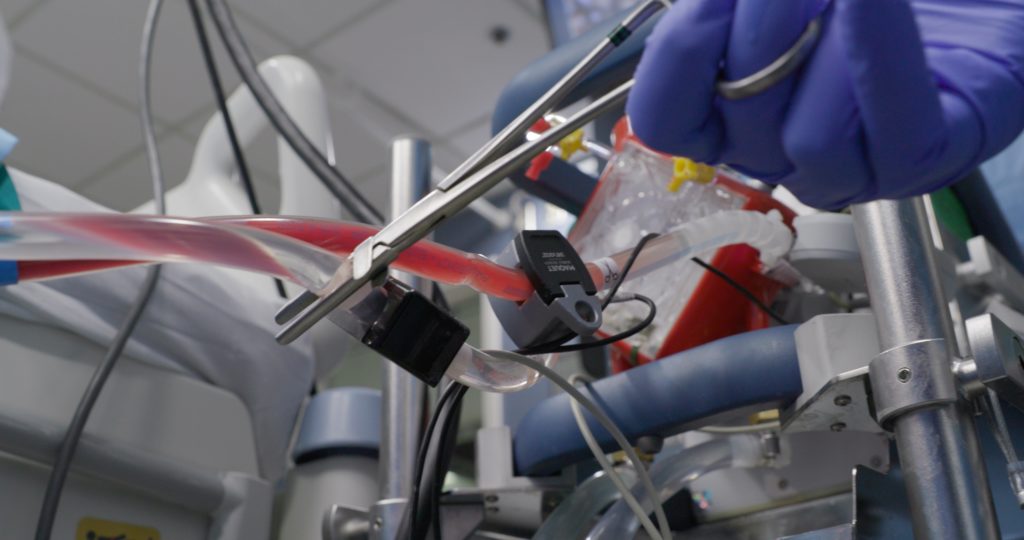
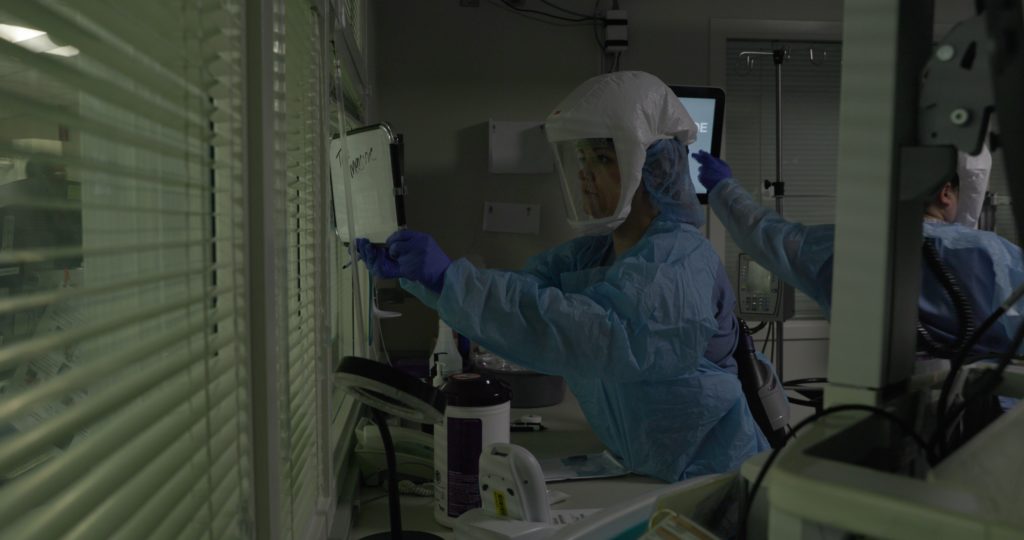
Wow!! Excellent piece.
Alistair (Vancouver BC)
Thanks Alistair. What have you been working on up in Canada recently? I miss being able to cross the border easily – was planning hiking trips to Whistler area but had to cancel them.
Brilliant work Dan. I really appreciate your insight on the c500 mkii. I’m a sony shooter who jumped from the 5dmkiii, c100 to an a6500 & a7iii for my mini doc work and i’ve been contemplating a jump back to Canon (c300 mkiii or c500mkii). Your closing insight on the ability to focus on “what” vs. “how” to shoot, having the ability to have your attention on the moment vs. the mechanics of the camera resonates deeply. We’d all love to care less about the tools and have the freedom to be more present in capturing the heart and spirit of the moment. Thank you again for taking the time to share.
Thanks Joel, sounds like we took a similar path from the 5d into Sony world. I don’t think you’ll regret it if you choose, as I did, to come home to Canon with either the new C300mkiii, or the C500mkii. These are documentary shooters dream cameras.
Hey Dan,
Great piece! Your website is one of a few I visit regularly to check for updates. Worth every time I find a new video. Keep up the high value educational content!
Greetings from Germany
Hi Lorenz, well I guess I need to keep this updated more often then, hey? Truth is I haven’t been very busy lately, with my clients furloughed due to Covid. But that does give me more time to write. I’ll see what I can do 🙂
I enjoy the pace – so I read every article. Not one out of three.
If you have something you wanna talk about … of course.
Stay safe!
Dan, having just bought a C300 Mark III, I’d love to hear more about how you’ve got it configured (custom button assignment, menu page, etc.) Would you mind sharing that?
Regards,
Fergus
Of course, happy to! I’m on vacation at the moment away from my camera, so I’ll get to that when I’m back home and make a small post about how I remap my buttons and created custom menus for my documentary style usage.
Thanks! That would be fantastic.
Hi Dan,
Just bugging you (gently, hopefully!) to do a post or even just a comment here about your settings. I’m still curious…
Thanks!
Dear Dan,
what a great doc. I’m writing you as a film scout for the UNIFIED FILMMAKERS FESTIVAL, a short film festival that calls out filmmakers from all over the world to send in their films on socially relevant and global topics. This year’s festival topic is the Covid-19 pandemic. As your documentary fits our festival’s topic, you may want to think about submitting it!
For more info, please visit http://www.unifiedfilmmakers.com
I’m very excited to hear back from you.
Best, Meriam